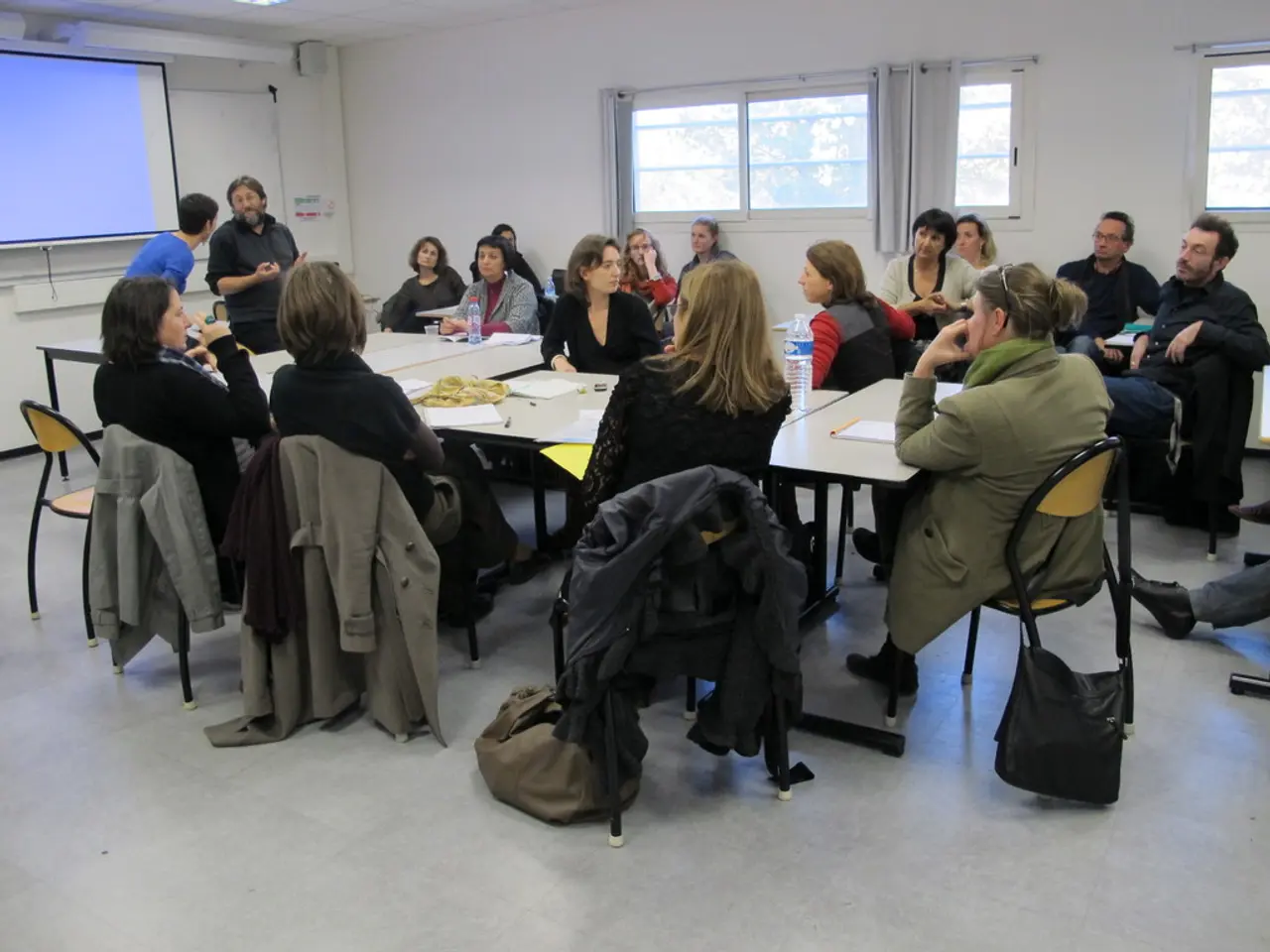Understanding Miscommunication Isn't a Complex Puzzle-It Follows a Recurring Pattern You Can Disrupt
Improving Workplace Communication: A Guide for Organizations
In the modern workplace, effective communication is key to productivity and financial success. Miscommunication can lead to decreased productivity and financial losses, but with the right strategies, these issues can be mitigated.
To develop strategies addressing miscommunication in the workplace, focus on breaking down generational barriers, understanding the role of language, accommodating different communication styles, and creating effective communication practices through intentional efforts.
Breaking Down Generational Barriers
Recognize and respect the different communication preferences across generations. Younger employees might prefer digital communication tools while older generations may favor face-to-face or phone interactions. Promote intergenerational understanding by encouraging open dialogue, fostering empathy, and reducing misunderstandings. Provide equal access to communication tools and information platforms to all generations to ensure no group is disadvantaged or excluded from information flow.
Understanding the Role of Language
Focus on clear, simple, and inclusive language to avoid jargon or slang that might confuse different age groups or cultural backgrounds. Pay special attention to nonverbal cues such as tone and body language, as these can differ in interpretation across generations and can be lost in text-based communication. Encourage active listening to understand not just the words but the emotions and intentions behind communication.
Accommodating Different Communication Styles
Increase awareness of how individuals communicate by encouraging self-reflection and training on varied communication styles and preferences. Hold regular one-on-one meetings to discuss preferred communication methods, build trust, and adapt strategies accordingly. Open multiple feedback loops, such as town halls, surveys (including anonymous ones), and pulse checks, so employees have diverse ways to express thoughts and concerns, respecting their comfort zones.
Creating Effective Communication Strategies
Establish reliable and accessible communication platforms for all employees to have consistent information access. Encourage an open culture where transparent and honest communication is valued, and where employees feel safe to share ideas and issues. Train leaders and staff on conflict resolution strategies like accommodating (to maintain harmony) and collaborating (to find win-win solutions), which help in addressing misunderstandings constructively. Enhance communication effectiveness by scheduling regular meetings, ensuring clarity of messages, and providing constructive feedback regularly.
By integrating these approaches, organizations can tailor communication to diverse needs, reduce miscommunication, and build a collaborative and productive workplace culture. Strategies to address language-related miscommunication may involve providing language training or using translation tools. Selecting appropriate channels to reach the audience is an important aspect of a communication strategy.
In conclusion, effective communication is vital in fostering a positive company culture, boosting teamwork and productivity, and promoting personal development by catering to various communication styles, creating a more inclusive environment.
- To boost productivity and financial success in the workplace, organizations can focus on effective communication practices that include breaking down generational barriers, understanding the role of language, accommodating different communication styles, and creating intentional communication strategies.
- When addressing generational barriers in the workplace, organizations should promote intergenerational understanding by encouraging open dialogue, fostering empathy, providing equal access to communication tools, and encouraging respect for diverse communication preferences across generations.
- Enhancing communication effectiveness can be achieved by establishing reliable and accessible communication platforms, fostering an open culture of transparent and honest communication, and training leaders and staff on conflict resolution strategies like accommodating and collaborating.
- Personal growth, learning, and health-and-wellness can be promoted in the workplace by implementing communication strategies that cater to various communication styles, reduce miscommunication, and create a more inclusive environment for personal development and education-and-self-development.




